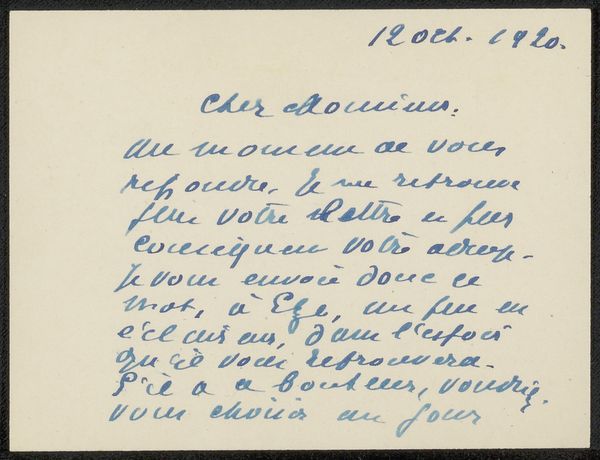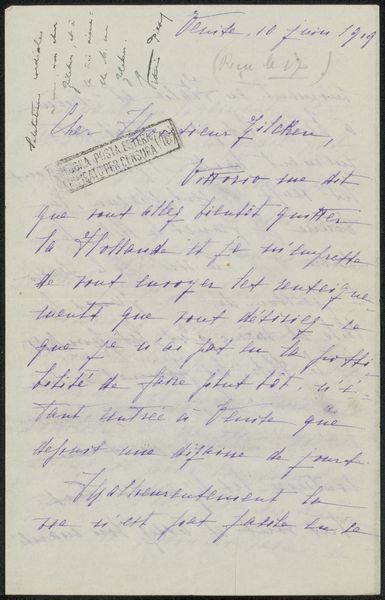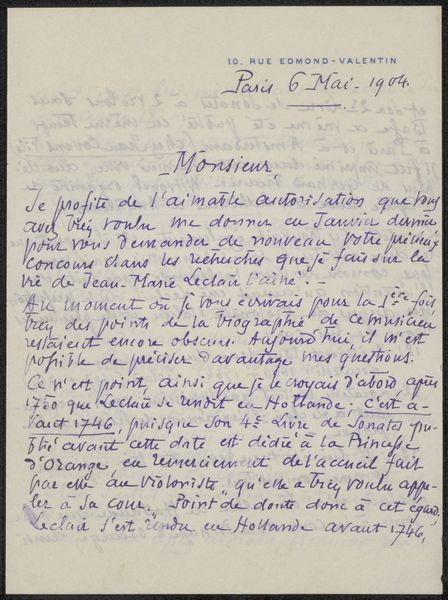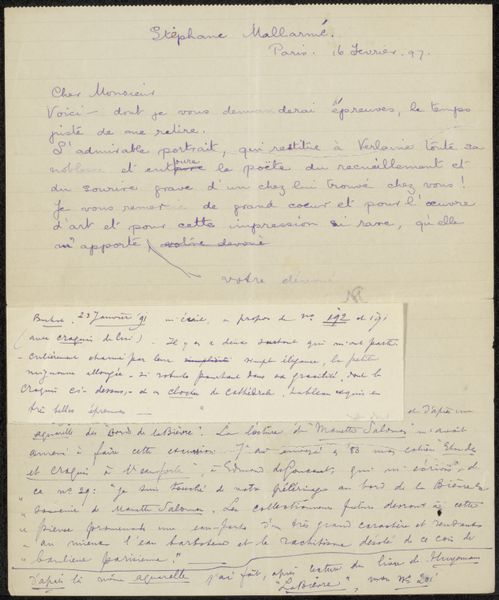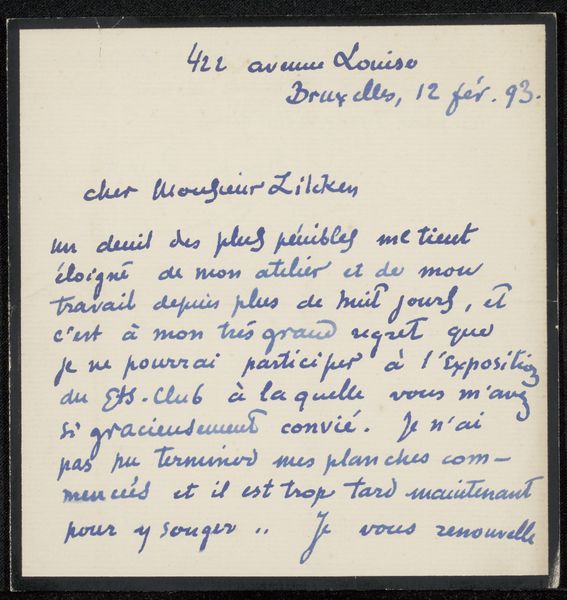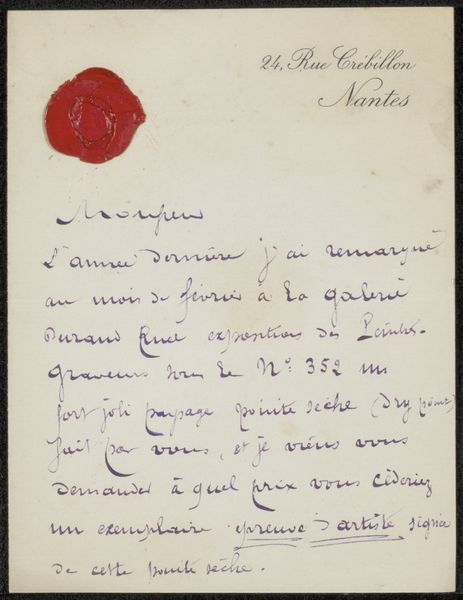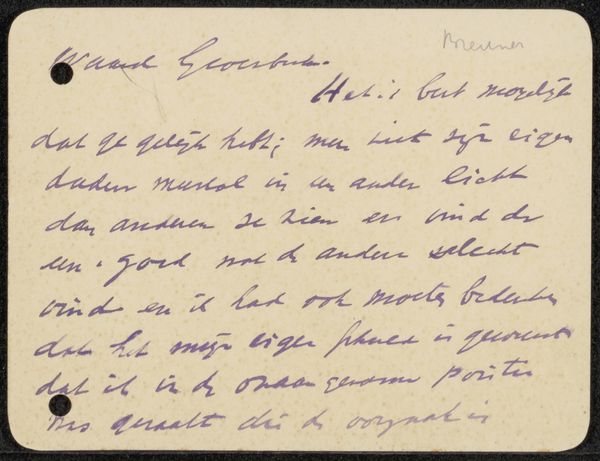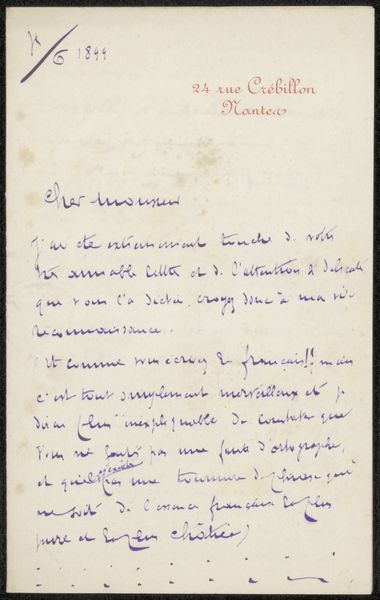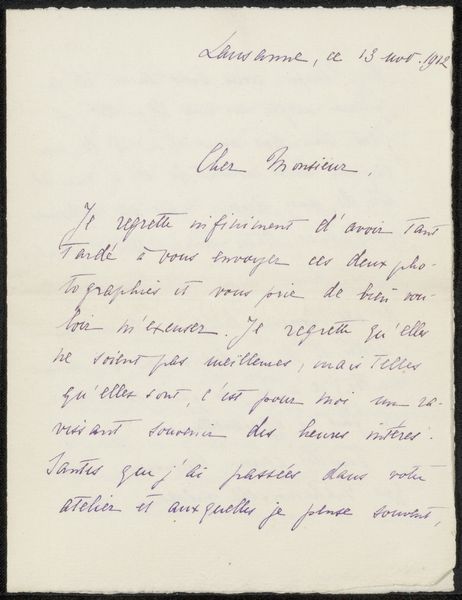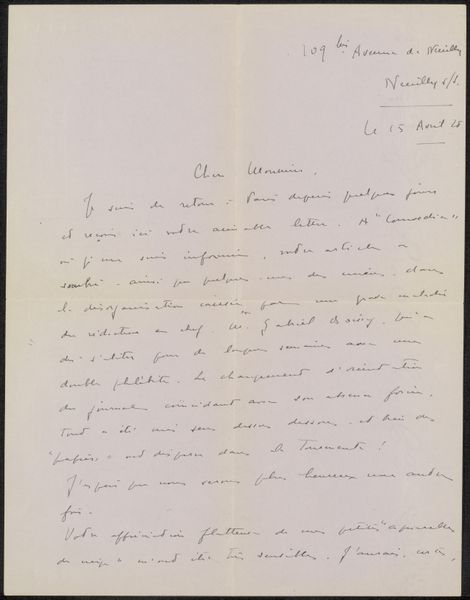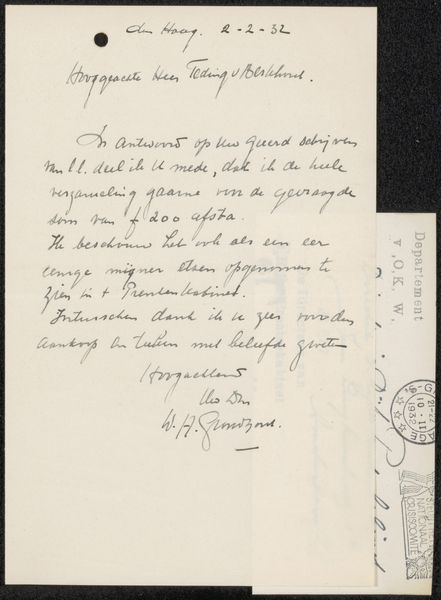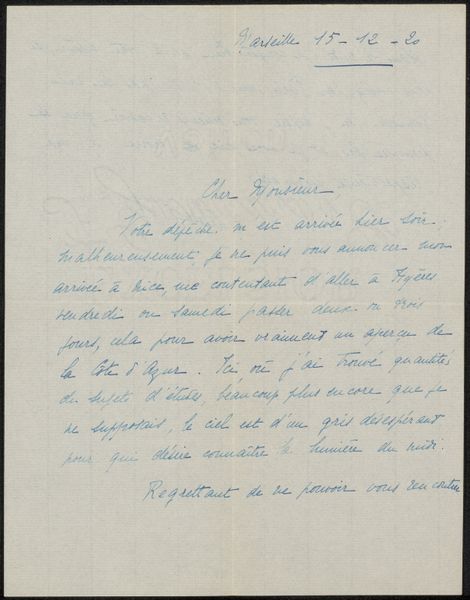
Copyright: Rijks Museum: Open Domain
Curator: Here we have Theo van Rysselberghe’s “Brief aan Philip Zilcken,” likely created around 1893. It's ink on paper, a delicate drawing. Editor: My initial reaction is drawn to the striking formality embedded within the intimacy of the handwriting, this tension is what speaks to me at first glance. Curator: That's insightful. The letter format immediately situates it within a social and communicative context, revealing the conventions and rituals inherent in written correspondence of the time. Think about the performative aspect, the address, the opening salutations, what do they signify to you? Editor: I think, within a structural frame, that we can see how Rysselberghe employs the very act of writing to perform a societal script, right? A symbolic gesture acknowledging the shared social contract between himself and Philip Zilcken, but maybe, more subversively, pointing to the superficiality of such interactions. Curator: Interesting perspective. The blue ink adds an unexpected warmth, almost softening the rigid lines of the script, it also speaks volumes. Editor: For sure. It tempers what could be a very stiff formality, and even undermines any potential power dynamics in their exchange, but, to me, it brings a personal element of introspection and emotional subtlety. Curator: You’ve zeroed in on an important duality, this personal yet public form, the visual impact that is simultaneously communicative and symbolic. Editor: It's the interplay of intention and reception, isn't it? What Rysselberghe aims to express versus how we, as viewers, interpret it now given everything we know – or think we know – about that time and context. It serves as a document frozen in time. Curator: And the hand lettering itself takes on symbolic meaning. Each stroke conveys not just a word, but also the artist’s sensibility, their personal approach to language and communication. Editor: So ultimately the "letter" is a symbol for communication as a process... something incomplete on its own, only to be imbued with meaning when interpreted by a receiving agent, be it the addressee then, or us today. Curator: Absolutely, which shifts our focus from it being simply a historical artifact, to one about the psychology of dialogue itself, so artfully depicted. Editor: Agreed, an excellent example of how a personal exchange can transcend its original intent.
Comments
No comments
Be the first to comment and join the conversation on the ultimate creative platform.

